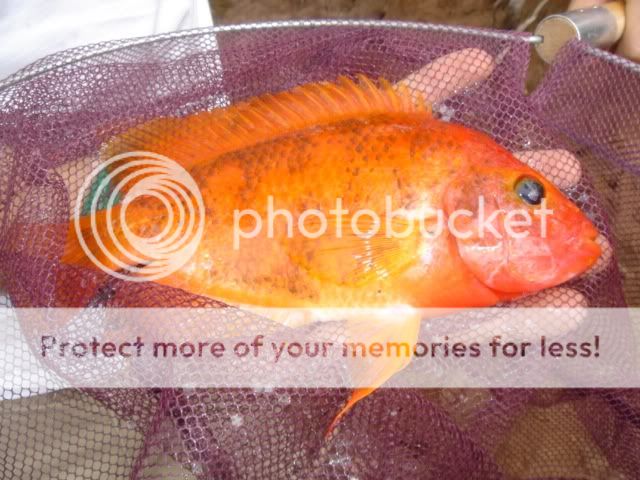No need to wonder because from day one devil entered the aquarium hobby, breeders have been line breeding and cross breeding the reddest fish. In their natural habitat, black strain is the norm and red strain is rarity. In the aquarium strain, the opposite is true and black strain is hard to get unless you special order them from importers. The Asian have been selective breeding the reddest devils in commercial scale to come up with different strains of parrots, and those are the reddest devils you can find. So what you see is what you get, and it's unlikely you can improve over what is already available the trade.
I personally have never seen a true red "red devil" in real except in pictures so I remain skeptical they exist. The reddest devil I've seen in real are parrots but they are orange to pinkish red, not true (maroon) red. It's interesting that red strain devil thrown into Florida and Hawain lakes did not revert back to the black wild strain the way red oscar do. My theory is that red devil has to go through the peeling metamorphosis so juveniles are dark and camouflaged and only turn red when they are big enough to defend themselves.
Was wondering how long it would be before someone jumped on the Parrots. You seem to speak authoritatively on the fact that a parrot is just a line bred red devil. I don't believe this theory (among several otheres) is in the lead for the origins of the parrots if you examine all the evidence. I can't disagree that there appears to be red devil blood in the make-up of parrots, but I don't think you will find too many people agreeing that they are just mutant line bred devils. The fact that the males are near 100% sterile points to hybrid origins. It is certainly possible to get fish as red as we would all like going the hybrid route - no question - been proven - not easy or simple, but proven.
I think this thread was attempting to discuss red devils and their maximum color potential when it comes to red. We have seen some fine examples in this thread of some fish with amazing color. No one has questioned which "red devil" these are or if they are hybrids between labiatus & citrinellus. The issue with getting the dark color form of these fish is the same with finding a reliable source for pure species of either. They can be found, but not likely at our LFS's.
I was doing some searching on the web to understand the "fading" we see in these fish and was interested in the generic inheritance. One article (didn't save the reference) talked about how in the wild these fish are normally found in the "natural" color form, but because even the ones that change color don't change until they are larger, there is a higher percentage of these than you might expect. The article talked about how the brighter colored ones tended to breed at greater depths and suggested this as an adaptation where the lighter color fish are able to breed at greater depths where the low light levels would make it more difficult for the "natural" colored fish to spawn. Lastly the article suggested that for the fish that "fade" to the brighter colors, the full range of colors are noted from white, to yellow, to orange, to red with highest percentage being in the middle of the color range (yellow/orange) and red being the most seldom observed. I can't remember if this article was focussed on labiatus or citrinellus, but the point is there are some exceptional individuals from this group of fish.
It does not seem like there is anyone offering young from a breeding program focussed on breeding for red color in these fish. Most of the "purists" just want pure fish lines, tend to be less interested in the particular color of the fish (would appear they are somewhat less concerned about vanity), and are happiest with wild caught fish regardless of their appearance. Then you have the hybridists that go for the appearance above all else and don't care to get bogged down too much in the discussions of the merits of one collection point of species or another because they are working to combine attributes of different species anyway. Then there are the folks that fall somewhere in the middle - not too sure what to think about hybrids and don't really care if their fish are wild caught or not (kinda neat if they are, but not a big deal). The ones in the middle tend to ask questions like - "Are there any actual red "red devils"? For me, I tend to fall between the middle and the hybrid end of the spectrum. I am vain in my fish interests and want fish that are going to "pop" from a color perspective. If I can get that in a line bred species that breeds true, then that is ideal and in my opinion the best of both worlds. If I need to look to hybrids to find the fish that tickle my fancy then I am not opposed to that either.
Sorry for the long ramble here...
So back to the question I think the OP was getting at - is there anyone out there raising a strain of red "red devils"? And more importantly, are they breeding them and do the fry color up like the parents if given proper conditioning (nutrition & sunlight)?













